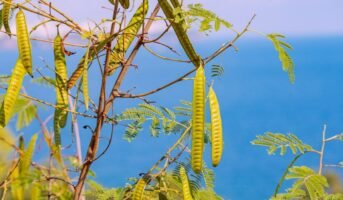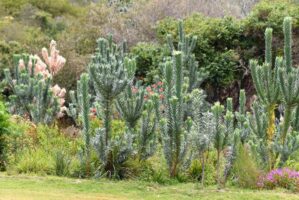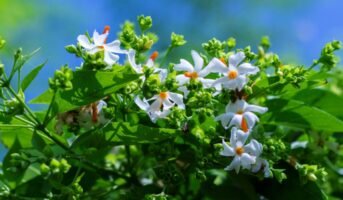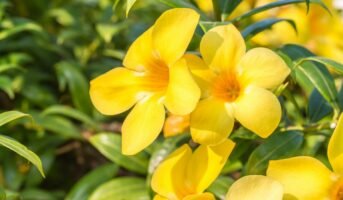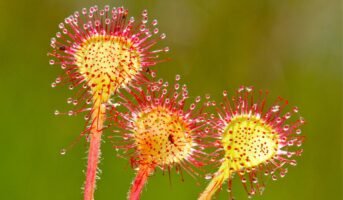Impatiens balsamina is an annual flowering plant, commonly known as Garden balsam, which can be easily grown indoors, or outdoors. This fast-growing plant produces flowers in pink, purple and red colours, which enhance the beauty of your home. The plant is native to the Himalayan region and is also known as Gul-mehndi in India. If you want to grow this low-maintenance plant at home, check this guide.
See also: Zinnia elegans varieties and plant care tips
Impatiens balsamina: Quick facts
| Plant name | Impatiens balsamina |
| Common names | Balsam, Garden balsam, Rose balsam, Touch-me-not, Spotted Snapweed |
| Family | Balsaminaceae |
| Found in | India, Myanmar, tropics of Asia |
| Flower colour | Pink, purple, red, lilac, white |
| Flower blooming season | Spring, summer, and fall |
| Toxicity | Low |
| Benefits | Traditional medicine and dye |
Known about: Phyllanthus urinaria: Benefits, uses and plant care
Impatiens balsamina: Plant description
- The plant grows up to a height of 20 to 75 cm.
- It has thick and succulent stems and elliptical leaves, having a spiral arrangement.
- The soft stem of the plant is straight with a smooth surface and appears green, or red in colour.
- The fruits are one to three inches long capsules, which are golden, yellow, or green in colour. Seeds can spread as the capsules burst open.
- The cup-shaped, colourful flowers of the plant are pollinated by insects, bees, and nectar-feeding birds. They have four to five petals and grow up to one to three inches in size.
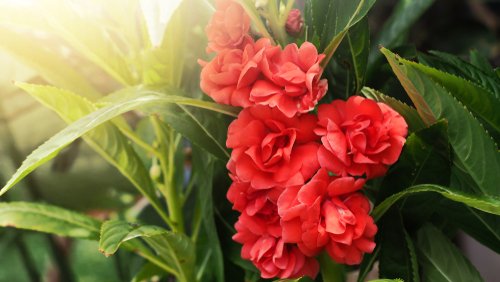
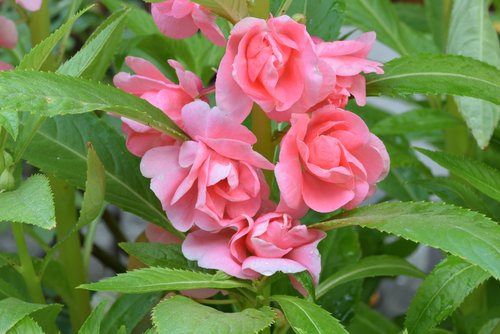
see also about Arjun tree: Propagation, care, uses, and toxicity of Terminalia arjuna
Impatiens balsamina: Benefits and uses
Medicinal uses
Various parts of Impatiens balsamina find their applications in traditional medicine, especially for treating skin disorders.
- Juice extracted from plant leaves was used to cure warts and snakebite.
- The flower was used in treating burns.
- In Asia, the Garden balsam has been used to treat ailments, such as rheumatism, fractures, etc.
- In Korea, impatiens plant species known as Bongseonhwa dae have been used as a remedy for constipation and gastritis in folk medicine.
Used as dye
In southeast Asia, it was also used in making dyes. For example, in Nepal, balsam leaves were crushed to colour fingernails on the day of Shrawan Sankranti.
Ornamental purposes
The colourful flowers of Impatiens balsamina make it a suitable choice for landscaping purpose. The plant attracts butterflies and pollinators. Thus, it is also used in designing theme-based gardens, such as Butterfly Garden, Shade Garden and Pollinator Garden. However, Garden balsam are excellent plants to be grown in containers inside homes, or in home gardens.
How to take care of Impatiens balsamina?
- Sunlight: Keep the plant in direct sunlight for six hours or more every day and in partial shade for a minimum of two hours. Hence, it must be protected from the strong afternoon sun.
- Soil: The plant prefers soil with good drainage and high organic matter. It should be moist. The soil type can be clay, sand, or loam. Soil pH is slightly acidic to neutral is recommended.
- Watering: Water the plant regularly to maintain an optimum level of moisture. Do not allow it to get waterlogged. Avoid overwatering the plant.
- Fertiliser: Use a balanced, slow-release flower fertiliser for the plant to ensure its healthy growth.
- Temperature and humidity: The plant cannot withstand cold temperatures. It grows well in warm temperatures. They can also thrive in dry air if the soil is kept moist.
- Pruning: Pruning is not required but trimming it up to a few inches helps promote bushy growth.
- Potting and repotting: Plant Impatiens balsamina in a big flowerpot, containing adequate drainage holes. Choose a good quality commercial potting mix. Repotting may not be necessary if you choose a large container for the plant.

Impatiens balsamina: Colorful garden addition
Impatiens balsamina or Garden Balsam are available in different varieties based on their growth habit, flower shape or colour. You can consider growing the different cultivars to add colours to your home garden.
Some popular cultivars include:
- Blackberry Trifle, which is characterised by its purple and white variegated petals.
- Bush Mix is one of the types of Impatiens balsamina that stays compact and full unlike other varieties that become lanky by the end of the growing season
- Tom Thumb Mix is suited for the edge of a border or a container garden, averaging 8 to 10 inches tall.
How to grow Impatiens balsamina plant?
The plant can be easily grown from seeds that sprout in just about four days in ideal soil conditions. Start planting them indoors around six to eight weeks before the expected last frost date in the area. Press them gently into a seed-starting mix. When the soil temperature outside gets warmer, bring seedlings outdoor. Allow a minimum of 12 inches to three feet of space to plant them.
Growing tips for Impatiens balsamina
- When growing Impatiens balsamina indoors, make sure the flowerpots have sufficient drainage holes.
- Light accelerates seed germination. Do not cover the seeds fully with soil.
- Select a container to ensure the flowers are 12 to 18 inches (30-46 cm) apart.
- Always check the soil before watering. Avoid soggy conditions or waterlogging.
FAQs
Is Impatiens balsamina plant poisonous?
Leaves are the poisonous part of the plant. When consumed raw in large amount, it can cause an accumulation of calcium oxalate that may be slightly toxic.
What are the common problems while growing Impatiens balsamina?
The plant is quite free from pests and diseases. However, it needs to be protected against common pests and insects, including aphids and cucumber beetles. It may also be prone to powdery mildew, a fungal disease seen in some plants. Another common problem is that its self-seeding ability may result in spreading of weeds.
| Got any questions or point of view on our article? We would love to hear from you. Write to our Editor-in-Chief Jhumur Ghosh at [email protected] |
Harini is a content management professional with over 12 years of experience. She has contributed articles for various domains, including real estate, finance, health and travel insurance and e-governance. She has in-depth experience in writing well-researched articles on property trends, infrastructure, taxation, real estate projects and related topics. A Bachelor of Science with Honours in Physics, Harini prefers reading motivational books and keeping abreast of the latest developments in the real estate sector.

